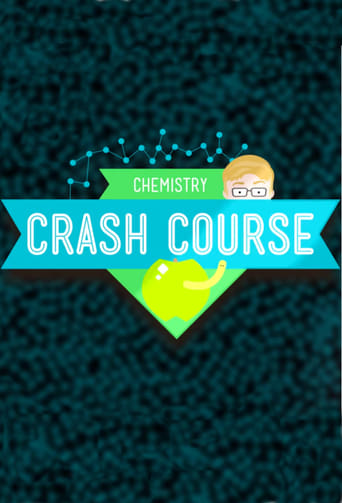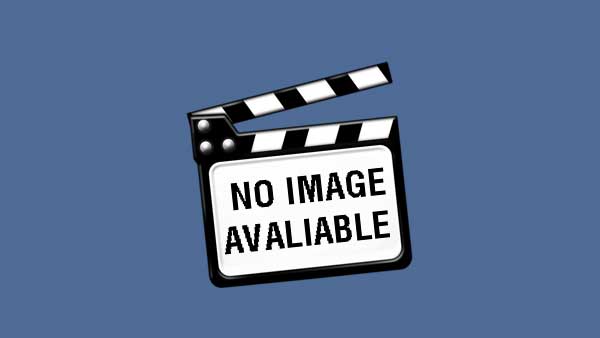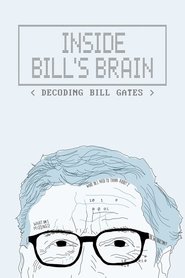

Crash Course Chemistry - Season 1 Episode 22 Atomic Hook-Ups - Types of Chemical Bonds
Season - Episode
-
 1 - 1The Nucleus Feb 11, 2013
1 - 1The Nucleus Feb 11, 2013 -
 1 - 2Unit Conversion & Significant Figures Feb 18, 2013
1 - 2Unit Conversion & Significant Figures Feb 18, 2013 -
 1 - 3The Creation of Chemistry - The Fundamental Laws Feb 25, 2013
1 - 3The Creation of Chemistry - The Fundamental Laws Feb 25, 2013 -
 1 - 4The Periodic Table Mar 04, 2013
1 - 4The Periodic Table Mar 04, 2013 -
 1 - 5The Electron Mar 12, 2013
1 - 5The Electron Mar 12, 2013 -
 1 - 6Stoichiometry: Chemistry for Massive Creatures Mar 18, 2013
1 - 6Stoichiometry: Chemistry for Massive Creatures Mar 18, 2013 -
 1 - 7Water and Solutions -- for Dirty Laundry Mar 25, 2013
1 - 7Water and Solutions -- for Dirty Laundry Mar 25, 2013 -
 1 - 8Acid-Base Reactions in Solution Apr 08, 2013
1 - 8Acid-Base Reactions in Solution Apr 08, 2013 -
 1 - 9Precipitation Reactions Apr 15, 2013
1 - 9Precipitation Reactions Apr 15, 2013 -
 1 - 10Redox Reactions Apr 22, 2013
1 - 10Redox Reactions Apr 22, 2013 -
 1 - 11How To Speak Chemistrian Apr 30, 2013
1 - 11How To Speak Chemistrian Apr 30, 2013 -
 1 - 12The Ideal Gas Law May 07, 2013
1 - 12The Ideal Gas Law May 07, 2013 -
 1 - 13Ideal Gas Problems May 13, 2013
1 - 13Ideal Gas Problems May 13, 2013 -
 1 - 14Real Gases May 20, 2013
1 - 14Real Gases May 20, 2013 -
 1 - 15Partial Pressures & Vapor Pressure May 28, 2013
1 - 15Partial Pressures & Vapor Pressure May 28, 2013 -
 1 - 16
1 - 16 -
 1 - 17Energy & Chemistry Jun 10, 2013
1 - 17Energy & Chemistry Jun 10, 2013 -
 1 - 18Enthalpy Jun 17, 2013
1 - 18Enthalpy Jun 17, 2013 -
 1 - 19Calorimetry Jun 24, 2013
1 - 19Calorimetry Jun 24, 2013 -
 1 - 20Entropy: Embrace the Chaos! Jul 01, 2013
1 - 20Entropy: Embrace the Chaos! Jul 01, 2013 -
 1 - 21Lab Techniques & Safety Jul 08, 2013
1 - 21Lab Techniques & Safety Jul 08, 2013 -
 1 - 22Atomic Hook-Ups - Types of Chemical Bonds Jul 16, 2013
1 - 22Atomic Hook-Ups - Types of Chemical Bonds Jul 16, 2013 -
 1 - 23Polar & Non-Polar Molecules Jul 23, 2013
1 - 23Polar & Non-Polar Molecules Jul 23, 2013 -
 1 - 24Bonding Models and Lewis Structures Jul 30, 2013
1 - 24Bonding Models and Lewis Structures Jul 30, 2013 -
 1 - 25Orbitals Aug 05, 2013
1 - 25Orbitals Aug 05, 2013 -
 1 - 26Liquids Aug 13, 2013
1 - 26Liquids Aug 13, 2013 -
 1 - 27Solutions Aug 19, 2013
1 - 27Solutions Aug 19, 2013 -
 1 - 28Equilibrium Aug 26, 2013
1 - 28Equilibrium Aug 26, 2013 -
 1 - 29Equilibrium Equations Sep 03, 2013
1 - 29Equilibrium Equations Sep 03, 2013 -
 1 - 30pH and pOH Sep 09, 2013
1 - 30pH and pOH Sep 09, 2013 -
 1 - 31Buffers, the Acid Rain Slayer Sep 16, 2013
1 - 31Buffers, the Acid Rain Slayer Sep 16, 2013 -
 1 - 32Kinetics: Chemistry's Demolition Derby Sep 24, 2013
1 - 32Kinetics: Chemistry's Demolition Derby Sep 24, 2013 -
 1 - 33Doing Solids Oct 07, 2013
1 - 33Doing Solids Oct 07, 2013 -
 1 - 34Network Solids and Carbon Oct 14, 2013
1 - 34Network Solids and Carbon Oct 14, 2013 -
 1 - 35Silicon - The Internet's Favorite Element Oct 21, 2013
1 - 35Silicon - The Internet's Favorite Element Oct 21, 2013 -
 1 - 36Electrochemistry Oct 29, 2013
1 - 36Electrochemistry Oct 29, 2013 -
 1 - 37The History of Atomic Chemistry Nov 04, 2013
1 - 37The History of Atomic Chemistry Nov 04, 2013 -
 1 - 38Nuclear Chemistry Nov 11, 2013
1 - 38Nuclear Chemistry Nov 11, 2013 -
 1 - 39Nuclear Chemistry Part 2: Fusion and Fission Nov 19, 2013
1 - 39Nuclear Chemistry Part 2: Fusion and Fission Nov 19, 2013 -
 1 - 40Hydrocarbon Power! Nov 25, 2013
1 - 40Hydrocarbon Power! Nov 25, 2013 -
 1 - 41Alkenes & Alkynes Dec 09, 2013
1 - 41Alkenes & Alkynes Dec 09, 2013 -
 1 - 42Aromatics and Cyclic Compounds Dec 16, 2013
1 - 42Aromatics and Cyclic Compounds Dec 16, 2013 -
 1 - 43Hydrocarbon Derivatives Dec 23, 2013
1 - 43Hydrocarbon Derivatives Dec 23, 2013 -
 1 - 44Nomenclature Dec 30, 2013
1 - 44Nomenclature Dec 30, 2013 -
 1 - 45Polymers Jan 06, 2014
1 - 45Polymers Jan 06, 2014 -
 1 - 46The Global Carbon Cycle Jan 13, 2014
1 - 46The Global Carbon Cycle Jan 13, 2014
-
 0 - 1Crash Course Chemistry: Outtakes #1 Apr 01, 2013
0 - 1Crash Course Chemistry: Outtakes #1 Apr 01, 2013 -
 0 - 2Crash Course Chemistry: Outtakes #2 Sep 30, 2013
0 - 2Crash Course Chemistry: Outtakes #2 Sep 30, 2013 -
 0 - 3Crash Course Chemistry: Outtakes #3 Dec 02, 2013
0 - 3Crash Course Chemistry: Outtakes #3 Dec 02, 2013 -
 0 - 4Crash Course Chemistry: Outtakes #4 Jan 20, 2014
0 - 4Crash Course Chemistry: Outtakes #4 Jan 20, 2014
Overview
Atoms are a lot like us - we call their relationships "bonds," and there are many different types. Each kind of atomic relationship requires a different type of energy, but they all do best when they settle into the lowest stress situation possible. The nature of the bond between atoms is related to the distance between them and, like people, it also depends on how positive or negative they are. Unlike with human relationships, we can analyze exactly what makes chemical relationships work, and that's what this episode is all about. If you are paying attention, you will learn that chemical bonds form in order to minimize the energy difference between two atoms or ions; that those chemical bonds may be covalent if atoms share electrons, and that covalent bonds can share those electrons evenly or unevenly; that bonds can also be ionic if the electrons are transferred instead of shared: and how to calculate the energy transferred in an ionic bond using Coulomb's Law.















